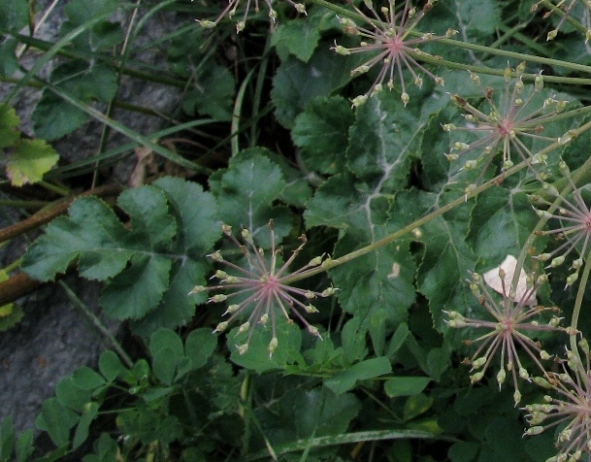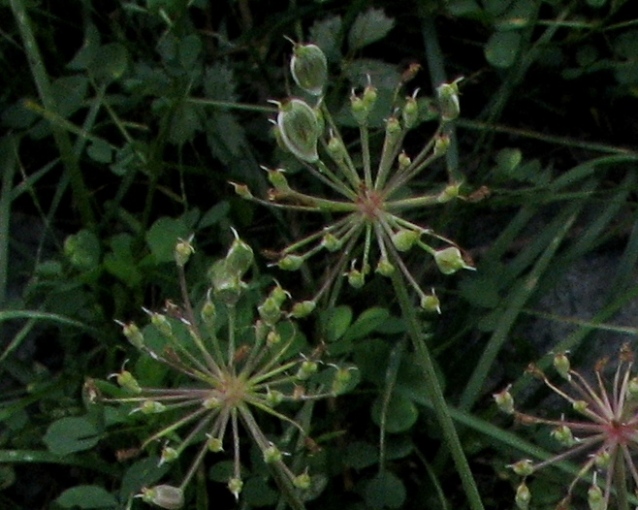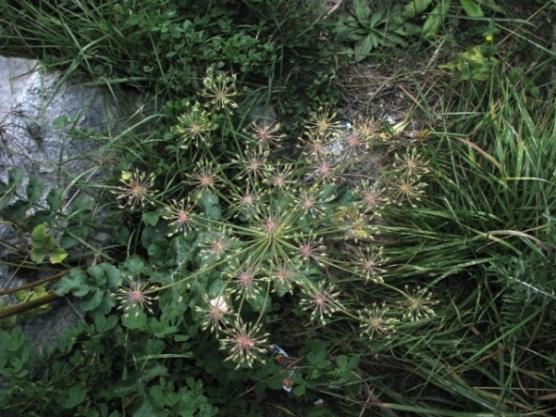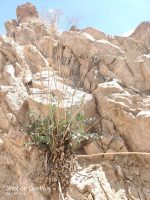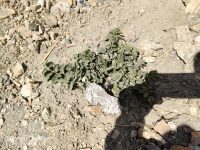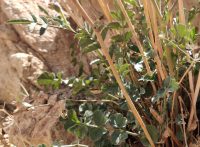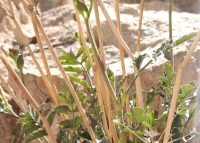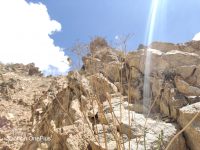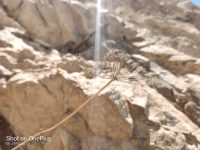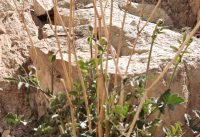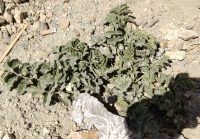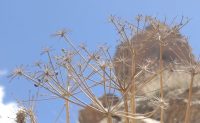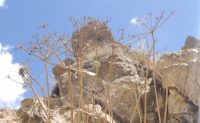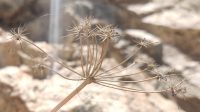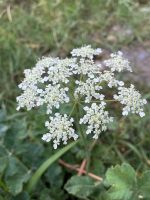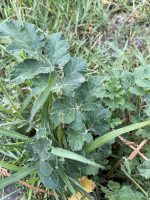|
Heracleum pinnatum C.B.Clarke, Fl. Brit. India 2: 712 1879. ;
. Seen this herb (around 40 to 50cm tall) at Turtuk, Ladakh.
Looks like some Heracleum sp.
Family: Apiaceae Date/Time: 18-09-2011 / 04:00PM Location: Turtuk, Ladakh Habitat: Wild Plant habit: Herb Apiaceae sp-??- at Nubra Valley – Ladakh– July-PKA-35 : 8 posts by 4 authors. Attachments (6) I guess it is Heracleum candicans. This should be Heracleum pinnatum, common in Ladakh.
Please check Heracleum species Could not decide with pubescent seeds. I consider this also to be Heracleum pinnatum. see previous post about Heracleum on way to Khardung La.
I hope Heracleum candicans, comparing with my herbarium specimens from Drass and above in 1970 I guess this is correct ID Heracleum candicans Wall. ex DC.
Nepali : Chhetaaro : छेतारो This is a member of what was known as the Umbelliferae family, now Apiaceae.
A family that can present challenges identification-wise, sometimes requiring ripe/mature fruits to be certain identification-wise.
Definitely Heracelum – known in UK as ‘Hogweeds’.
Only 2 species recorded from Ladakh to-date (though always look closely, just in case your specimens do not match descriptions well) which makes things easier.
The choice therefore is between H.pinnatum and H.candicans. Stewart did not record H,candicans from Ladakh (but from neighbouring Baltistan, so no surprise for it to be found in Ladakh). It is known through the hills of N.Pakistan and Kashmir from 2100-3300m. My team from the University of Southampton (UK) collected pressed specimens of both species in the Suru Valley in 1980, which were identified at Kew (a duplicate set of specimens went to the University of Kashmir herbarium). According to my un-published check-list for Ladakh (1980s) the collection of H.candicans was new to Ladakh at that time.
Members of the University of Southampton Expedition to Zanskar in 1981 found H.pinnatum to be frequent in dry, stony, exposed ground near Padum. In 1980 we found the species amongst dry fragmented rocks on an E-facing mountainside with scattered grasses. We found H.candicans on an E-facing slope beside an irrigation channel in sandy loam amongst Lotus corniculatus, Astragalus and grasses.
Klimes found H.pinnatum on stony river banks, screes, stony steppe and semi-desert slopes but did not record H.candicans.
On this basis, H.pinnatum is the most likely candidate for the images taken on the way to Khardung La.
There are photos of both species in ‘Himalayan Plants Illustrated’ (Yoshioka, 2005) but the images do not allow one to distinguish between the species. They do not show close sufficient close-up detail.
‘Flowers of the Himalaya’ describes both species but only has a photo of H.pinnatum (taken in Zanskar). The authors say this species is common on field verges in Ladakh.
The authors separate H.candicans on the basis that it is a robust perennial 60cm or more (our specimen from the Suru Valley was only to 40cm, so clearly this distinction is incorrect), in fact H.pinnatum we collected had example which were to 50cm, so taller! Dimensions are at best, of limited value in plant identification. As H.candicans can reach 2m…. It is also distinguished by the white-felted undersides of its leaves.
Its fruit is described as flattened obconic with broadly lateral wings. Whereas in H.pinnatum the fruits are elliptic with winged dorsal ribs.
Unfortunately the fruits shown are not fully mature.
I do have a copy of the full ‘Flora of Pakistan’ revision of Apiaceae (Umbelliferae) but cannot locate it at this time – will take a close look in due course.
My conclusion is that the images shared are most likely to be of Heracleum pinnatum. Request for Plant ID from Paddar valley J&K 090712: Kindly Identify this Plant Location: Paddar valley J&K
Altitude: 2000 meters asl
Date: 20th May 2012
Habit/habitat: Wild large erect herb
Height: 0.5 meters Looks like Heracleum sp. probably H. candicans Perhaps Heracleum canescens should also be considered. I was also thinking it as Heracleum canescens but one of my earlier post confused me.
Kindly have a look on the link
I think it is H. canescens only. H. candicans has much larger thicker leaves, white beneath. Here is my upload
http://www.flowersofindia.White-Leaf%20Hogweed.html To me looks closer to images at Heracleum pinnatum C.B.Clarke rather than those at Heracleum canescens Lindl. Heracleum pinnatum- Ladakh: 18 high res. images. .
Yes ! Yes, appears close to images at Heracleum pinnatum Yes H. pinnatum,
. References:
|
Heracleum pinnatum
Updated on December 24, 2024



